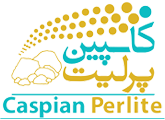renovating golf greens
Perlite for renovating golf greens
Golf greens are among the most highly managed turf areas to be found. Not only are they subject to the variables of nature, they must withstand compaction from concentrated foot traffic and exhibit infiltration rates sufficient to absorb heavy rainfall without ponding while still retaining water and nutrients for optimum turf growth. In addition, maintenance costs are very carefully monitored with golf greens and there can be very little interruption of play for golfers.
The Role of Perlite in Golf Greens
The unique physical characteristics of horticultural Perlite make it an ideal material for renovating golf greens. When horticultural Perlite is added as a constituent of the soil in golf greens, Perlite particles interface with each other and other soil constituents to create air passages through the green. These air passages provide oxygen to turf roots which is essential for good turf growth. In addition, these air passages permit excessive water to drain rapidly thus eliminating ponding and allowing play to proceed sooner following heavy rain. In addition, the horticultural Perlite eliminates soggy greens which can be easily damaged.
Although horticultural Perlite aids drainage, the unique particles enable horticultural Perlite to retain an optimum amount of water on their surfaces. This surface configuration retains water and water soluble nutrients making it available to the turf as need.
Renovating Greens
Ideally, the best method of incorporating horticultural Perlite into golf greens is as the greens are being constructed. There are literally thousands of existing greens, however, that can take advantage of the benefits of horticultural Perlite through a renovation procedure.
“Since applying Perlite we have noticed improved drainage and less compaction in our most difficult greens and better moisture retention in all our greens.” (Ron Bivins, Assistant Gold Course Superintendent, Salisbury Country Club, Salisbury, North Carolina)
In one technique used to renovate a golf green with horticultural Perlite, plugs of turf 20 mm in diameter and 250-300 mm long, spaced on 100 mm centers, are removed from the green. Turf plugs and plug debris should be thoroughly removed so that plug holes are not subsequently refilled by this material.
Horticultural Perlite is then spread on the green and swept into the plug holes until the holes are approximately 1/3 full. In the final stage, sand is spread over the green and swept into the plug holes until they are filled. As a result of play, irrigation and rainfall, the horticultural Perlite will migrate into the soil surrounding the plug holes to completely treat the green. Since horticultural Perlite is an inorganic material, it will not rot or deteriorate but will continue to perform year-after-year. Actual years of service before another treatment is required will depend on many factors such as amount of play, soil structure, irrigation, and rainfall.




